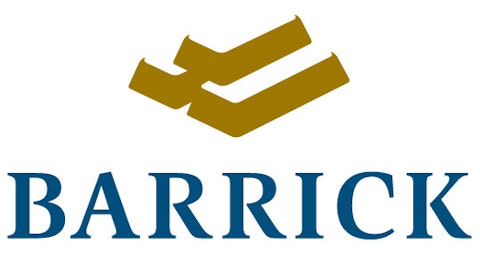LONDON — Global gold sales in 2012 hit an all-time record of $236 billion, according to the latest figures from the World Gold Council.
The price of gold rose by 6.2% over the year, outweighing a 4% fall in the tonnage of gold sold and a 10.4% fall in demand for investment gold.
What’s next for gold?
Gold purchases by exchange-traded funds (ETFs) rose by 51% in 2012, from 185.1 tonnes in 2011 to 279.0 tonnes. Central bank net purchases also rose, climbing from 456.8 tonnes to 534.6 tonnes.

ETF demand
Investors in gold ETFs saw the value of their holdings rise by about 6% last year, mirroring gains in the price of gold.
Gold ETFs have now become such big holders of gold that they have become an important element of the global gold market. To give you an idea of scale, the 800-pound gorilla of the gold ETF market is the SPDR Gold Trust (ETF) (NYSEARCA:GLD) , which owns $69.9 billion of gold.
On this side of the Atlantic, London-listed Gold Bullion Securities Limited (LON:GBS) and ETFS Physical Gold each hold around $8 billion dollars of gold. All three of these funds are physically backed ETFs, which means they buy and sell gold bars to match deposits and withdrawals by shareholders.
Are miners now a better buy?
Gold miners had a pretty grim year in 2012, as they struggled with rising costs and a stagnant gold price. Barrick Gold Corporation (USA) (NYSE:ABX) CEO Jamie Sokalsky summed up the situation in the company’s recent results release: “Rising costs, poor capital allocation and the pursuit of production growth at any cost in the industry have led to declining equity valuations across the sector.”
Like most mining bosses, Sokalsky is promising to cut costs and focus on shareholder returns, but rising energy and labor costs, and deteriorating ore grades (less gold per tonne of rock), may be hard to overcome, especially if the price of gold continues to weaken.
A better choice
FTSE 100-listed Randgold Resources Ltd. (ADR) (NASDAQ:GOLD) has bucked the trend in recent years, outperforming its peers and the price of gold.
In 2012, Randgold delivered a 14% increase in operating profits and a 25% dividend increase, while maintaining net cash at $372 million and continuing to develop its new Kibali mine, in the Democratic Republic of Congo.
However, a weakening gold price has put Randgold’s share price under pressure and it’s fallen 28% since the start of October. This gives Randgold a forward price-to-earnings ratio of 14, with a forecast 2013 dividend yield of 0.7% — modest, but higher than the company’s historic average.
If the price of gold remains stable and Randgold continues to deliver on its promises this year, then I think the company’s share price could recover steadily from its current weak patch, outperforming gold ETFs.
2013’s top growth stock?
Over the last 10 years, Randgold Resources has delivered capital gains of 734% to investors. The company still has room to grow, but it is unlikely to repeat this performance — it’s simply too big.
However, one company that is delivering strong growth is discussed in this free Motley Fool report, “The Top Growth Share for 2013.” The share highlighted in the report gained 38% in 2012, during which time the FTSE 100 rose just 6%.
The article Gold Demand Sets $236 Billion Record in 2012 originally appeared on Fool.com and is written by Roland Head.
Roland Head has no position in any stocks mentioned. The Motley Fool has no position in any of the stocks mentioned.
Copyright © 1995 – 2013 The Motley Fool, LLC. All rights reserved. The Motley Fool has a disclosure policy.




